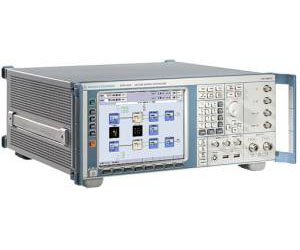Pattern Generators Buy
What Is A Pattern Generator – Pulse Generators Rent

A digital pattern generator is a piece of electronic test equipment or software used to generate digital electronics stimuli. Digital electronics stimuli are a specific kind of electrical waveform varying between two conventional voltages that correspond to two logic states (‘low state’ and ‘high state’, ‘0’ and ‘1’). The main purpose of a digital pattern generator is to stimulate the inputs of a digital electronic device. For that reason, the voltage levels generated by a digital pattern generator are often compatible with digital electronics I/O standards – TTL, LVTTL, LVCMOS and LVDS, for instance.
Shop For Pattern Generators
Digital pattern generators are sometimes referred to as ‘pulse generator’ or ‘pulse pattern generator’ which may be able to function as digital pattern generators as well. Hence, the distinction between the two types of equipment may not be clear. A digital pattern generator is a source of synchronous digital stimulus; the generated signal is interesting for testing digital electronics at logic level – this is why they are also called ‘logic source’. A pulse generator is of purpose to generate electrical pulse of different shapes; they are mostly used for tests at an electrical or analog level. Another common name for such equipment is ‘digital logic source’ or ‘logic source’.
Digital pattern generator can produce either repetitive, or single-shot signals in which case some kind of triggering source is required (internal or external).
Digital pattern generators are primarily characterized by a number of digital channels, a maximum rate and the supported voltage standards.
- The number of digital channels defines the maximum width of any pattern generated – typically, 8-bits, 16-bits, 32 bits pattern generator. A 16-bits pattern generator is able to generate arbitrary digital samples on from 1 to 16 bits.
- The maximum rate defines the minimum time interval between 2 successive patterns. For instance, a 50 MHz (50 MSample/s) digital pattern generator is able to output a new pattern every 20 nanoseconds.
- The supported voltage standards ultimately define the set of electronic devices a digital pattern generator can be used with. Concretely, the voltages and the transition characteristics of the signal at the output of the digital pattern generator will be compliant to these voltage standards. Examples of supported voltage standards: TTL, LVTTL,LVCMOS, LVDS.
Most digital pattern generator add features such as the ability to generate a repetitive sequence or a digital clock signal at a specified frequency, the ability to use an external clock input and triggering options, to start pattern generation upon the reception of an event from an external input.
